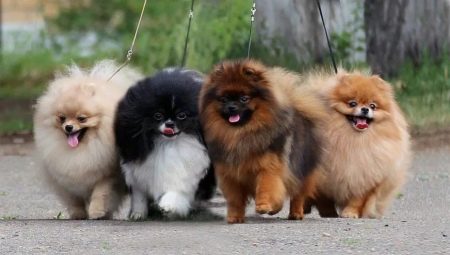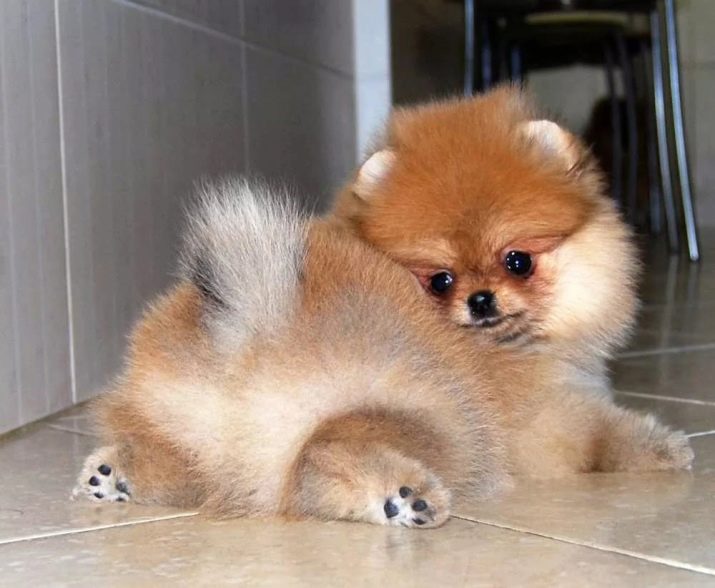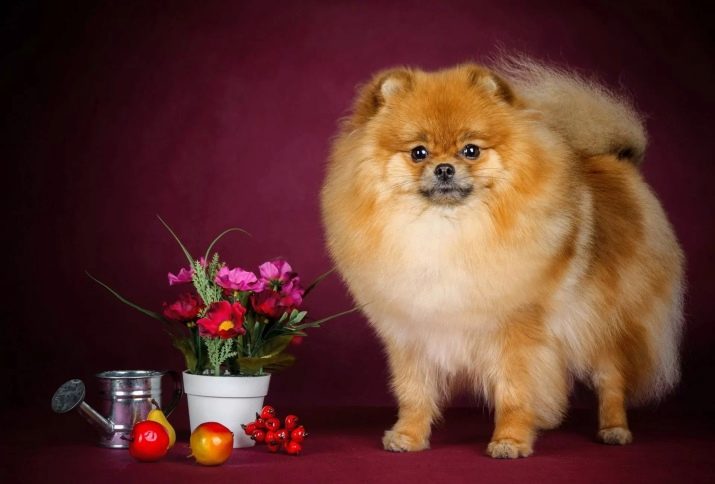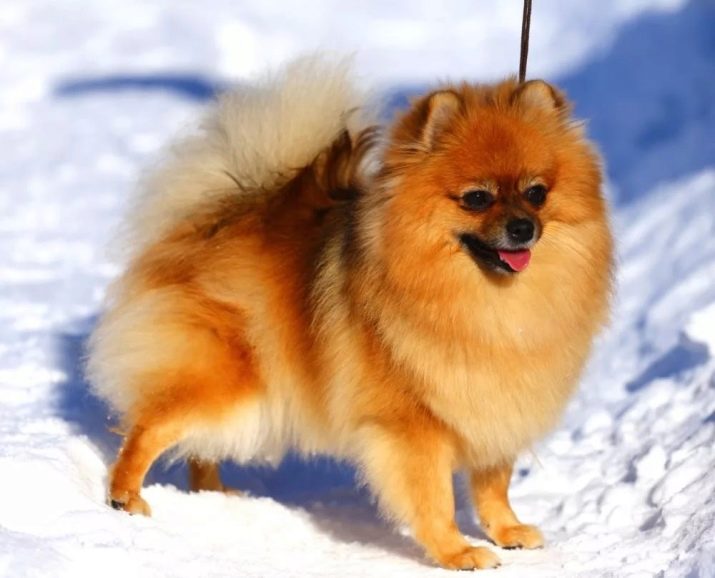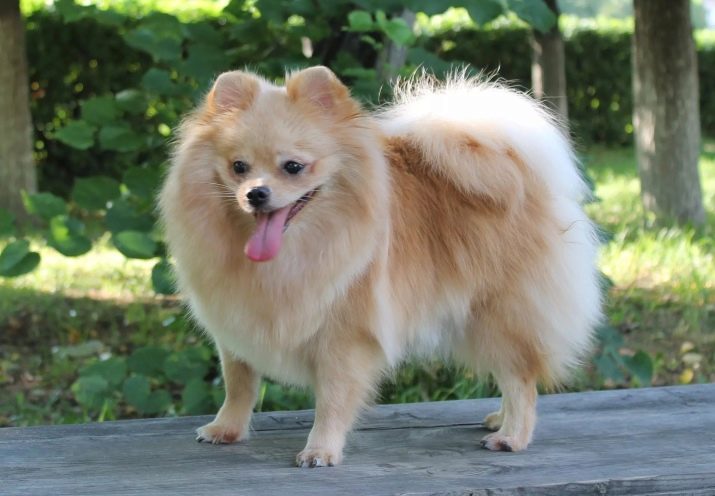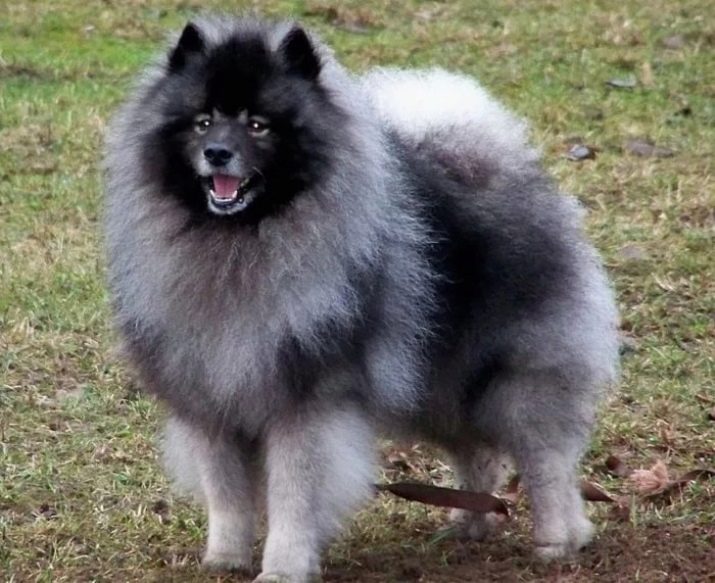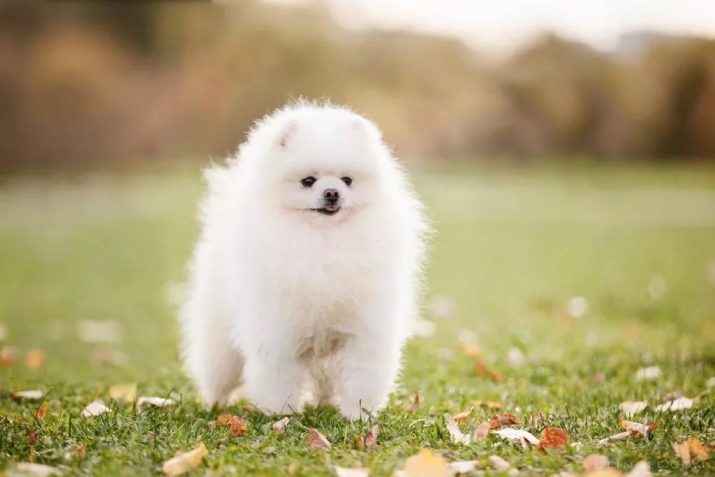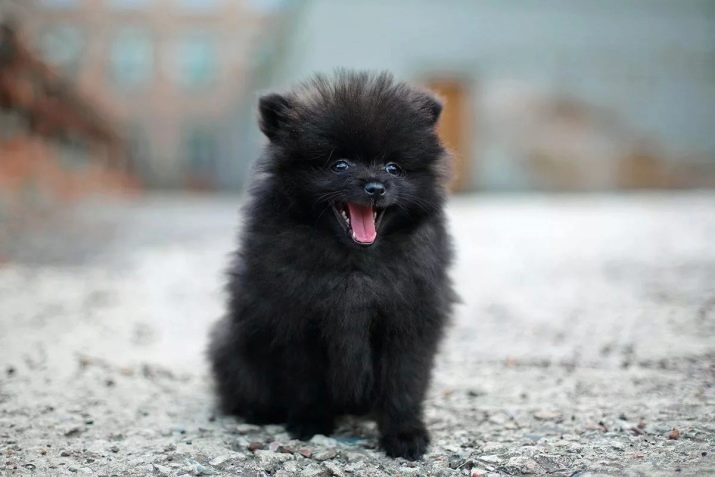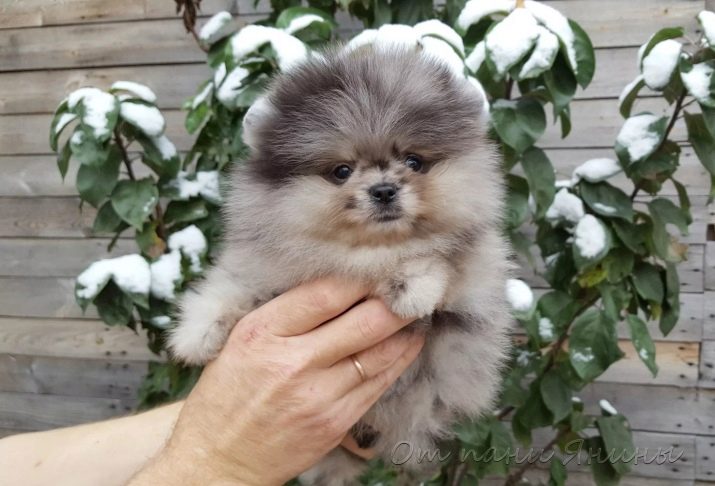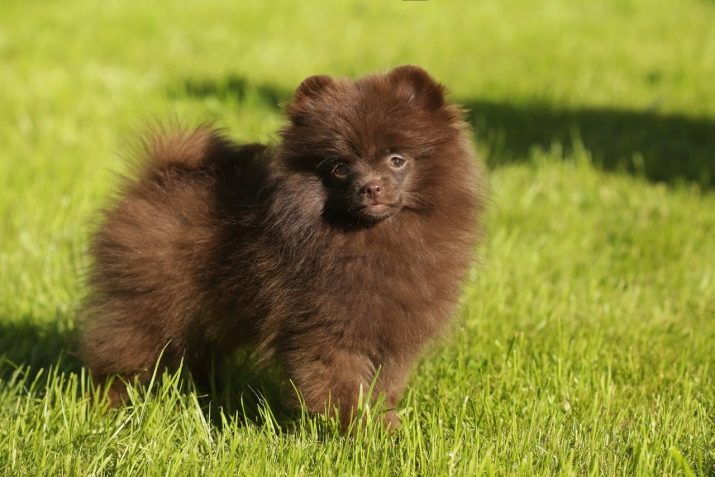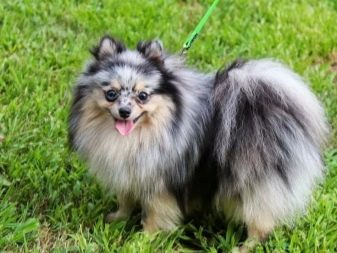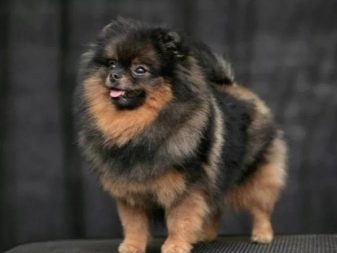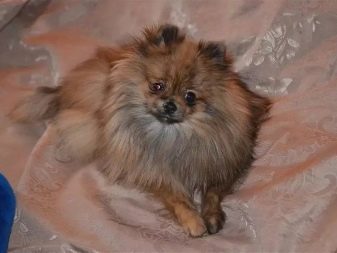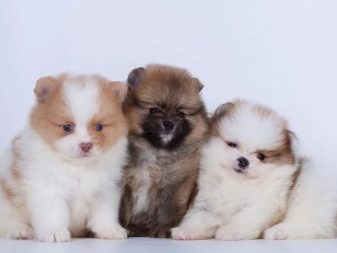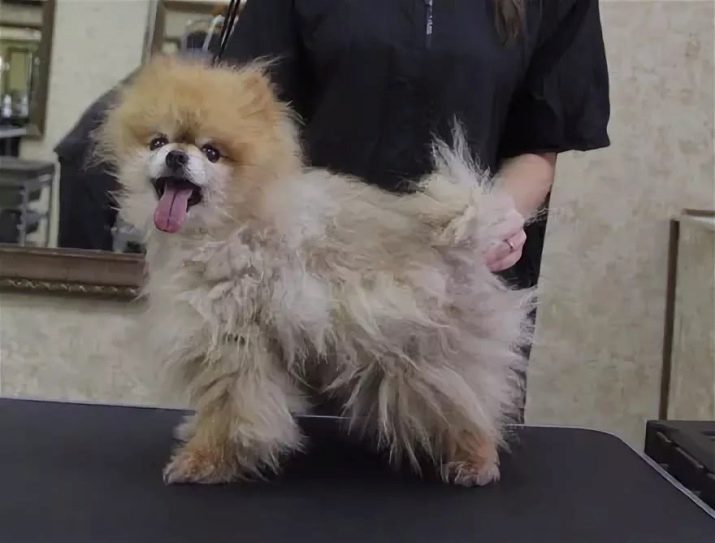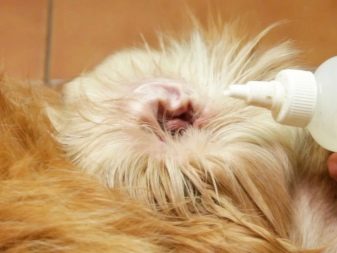Playful, fluffy spitz for a long time is very popular among breeders. The four-legged pet is a fearless guard and a loyal friend. The special attractiveness of the animal gives an amazing shade of wool. Pomeranian sable color - a real "decoration" of the dog world.
Breed characteristic
A charming pet with fluffy fur and a funny tail is a representative of one of the oldest breeds in Europe, which was bred several hundred years ago. Modern dog handlers have not lost interest in the Pomeranian spitz-dog and are happy to bring a four-legged friend to the house. This breed belongs to the dwarf decorative dogs. Despite its diminutiveness, the Pomeranian Spitz is a very courageous dog, which is distinguished by intelligence and ingenuity. The features of the breed include some of the positions described below.
- Peculiar physique. Visually, the spitz resembles a fluffy "square".
- Chic fur with a thick undercoat. There is a “collar” on the neck, and there are “pants” on the hind legs.
- The accurate, extended muzzle with "clever" eyes.
- Sticking ears and fluffy tail "ring".
- The height of an adult dog does not exceed 23 cm, and dogs weigh about 2.5 kg. Pomeranian spitzs live 15-18 years old, are in good health and are quite unpretentious in their care.
However, the owner of a fluffy puppy should be ready to train in the first days of his appearance in the house. The Pomeranian Spitz canes are quite capricious and can become uncontrollable without proper upbringing.
Fuzzies get on well with children and can play for hours with their favorite toys. At the same time, representatives of this breed are quite ambitious, do not tolerate rivals and can challenge a large dog.
Dog handlers highlight the intellectual abilities of such a dog. Spitz dogs are easy to train, instantly respond to their nickname and even able to perform tricks.
Color features
One of the most common shades of wool Spitz is sable. This color combines two colors: at the roots the fur is light, and the tips of the hairs are dark. The intensity of shades is uneven.
Sable colors has some varieties, which will be discussed below.
- Orange or red. This color is monotonous, although in some cases there are individuals with muzzle and hind legs of lighter tones. Spitz-orange sable is a regular at various exhibitions. His "fiery" color of wool looks particularly impressive against the background of other dog breeds.
- Cream. The color is close to white, but has a pleasant warm or cold shade. The color of the cream sable is characterized by bright eyes and a tip of the nose. Fur color is completely formed by the first year of life, when the dog has an undercoat.
- Gray or wolfish. This is the most common color of the Pomeranian Spitz. Fur dogs has a gray base, which casts silver. The tips of the hairs are colored black. The color of the dog's body is several tones lighter than the muzzle and ears. The end of the tail is darker than the base. The lightest areas of wool are concentrated on the shoulders and pet's mane, even minimal deviations from the standard of color are considered a marriage.
It is worth noting that the sable color changes as the animal matures. This feature is associated with the presence of puppy fluff. For this reason, most babies have gray fur. The main color appears only after three months of a dog's life.In the period of maturation, the sable color gradually loses its pigment and acquires a uniform fur color: orange, cream or gray.
In addition to sable, Pomeranian Spitz can have a different color.
- White. Currently, it is very difficult to find a completely snow-white spitz - most often puppies have cream-colored wool. Choosing a white-colored Spitz, you should pay attention to its pedigree. If distant relatives have a different shade of fur or dark blotches, then, most likely, after a molt, a white puppy will look like them.
- The black. This color looks very impressive. The spitz with black fur has a similar undercoat. However, puppies are born with brown hair, but after the first molt it becomes black. Spitz-dogs of this color look like little dark “balls” and resemble bear cubs.
- Blue. Such colors are quite rare, so buying a puppy will be expensive. Blue color is a different shades of gray. Also found marble color, which is very suitable for exhibition activities. Charming spitz-dogs with original colors of wool attract the attention of others and are a real gift for fastidious dog breeders.
- Brown. Chocolate-colored fluffy dogs are distinguished by a bright appearance, due to which it is difficult for them to get lost while walking. There should not be any foreign inclusions on the wool. Also the dog's nose and lips are chocolate colored.
- There are Pomeranian Spitz brindle and spotted color. The first is characterized by the presence of dark stripes on the back of the animal, and in the second case, the pet's coat is decorated with patches of saturated colors (black, red or gray).
Naturally, the price of a puppy with a creamy shade of wool will differ from common gray dogs - the original colors of the Pomeranian Spitz are valued rather high. In addition, when buying a puppy, gender plays a big role, as well as the pedigree of the dog.
A female is more expensive because it will bring offspring, and the owner himself can sell this breed. This feature is typical for decorative miniature dogs.
The pedigree provides information about the titled ancestors of the dog and provides important information about the absence of serious genetic diseases. If the puppy is defective, then its cost is significantly reduced.
Care and maintenance
Fluffy Pomeranian Spitz sable-colored excellent for living in apartment buildings. Miniature animals are unpretentious, but at the same time, without proper care, they are in danger. For example, pet wool requires special attention. It must be regularly combed out, otherwise the “teddy bear” will lose all its charm, and the fallen fur will become a dwelling for the parasites.
The procedure is carried out 1-2 times a week, and during the moulting period, combing is a daily activity.
When tangles appear, it is necessary to carefully cut off an unnecessary ball of wool. Spitz specialist haircut is carried out by a specialist - at home it is quite difficult to do.
The owner should pay special attention to the hygiene of the teeth and ears of the Pomeranian Spitz. You can clean the ears with cotton buds dipped in a special solution. As for the oral care of the animal, today there are special toothpastes and toothbrushes for dogs on sale. Also, the spitz is necessary to wipe the teeth with a piece of gauze soaked in hydrogen peroxide (1%).
In order for the animal's sable coat to not lose its thickness and luster, it needs a proper diet. The spitz puppy eats food up to 5 times a day, an adult dog is enough to eat 2 times a day. For this breed suitable dry industrial feed (preferably premium). As for natural products, it is useful for an adult orange to eat:
- fresh meat (excluding pork);
- boiled fish (boneless);
- rice and buckwheat porridge;
- low-fat cottage cheese;
- carrots.
Also, the spitz should be provided with high-quality drink (fresh water at room temperature). A healthy pet is notable for its activity and good appetite. If his behavior becomes suspicious, then the owner must urgently show the dog to the veterinarian.
On the care of the spitz, see below.
